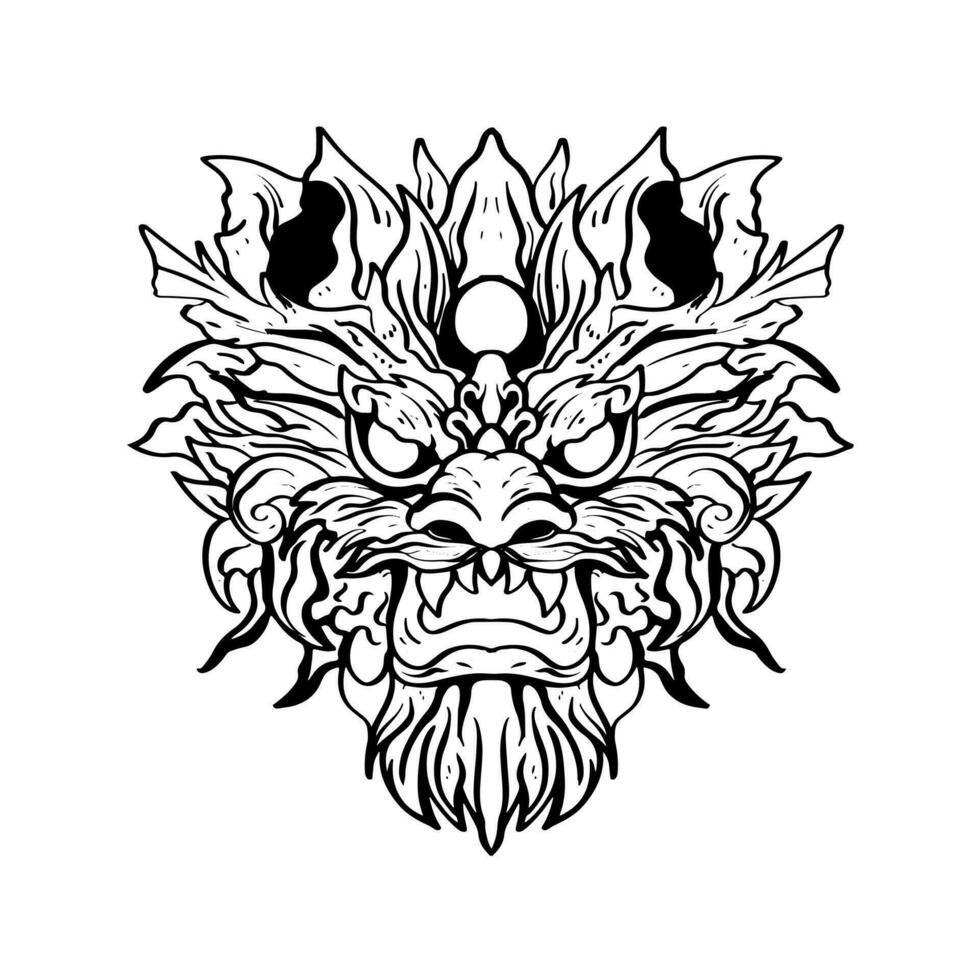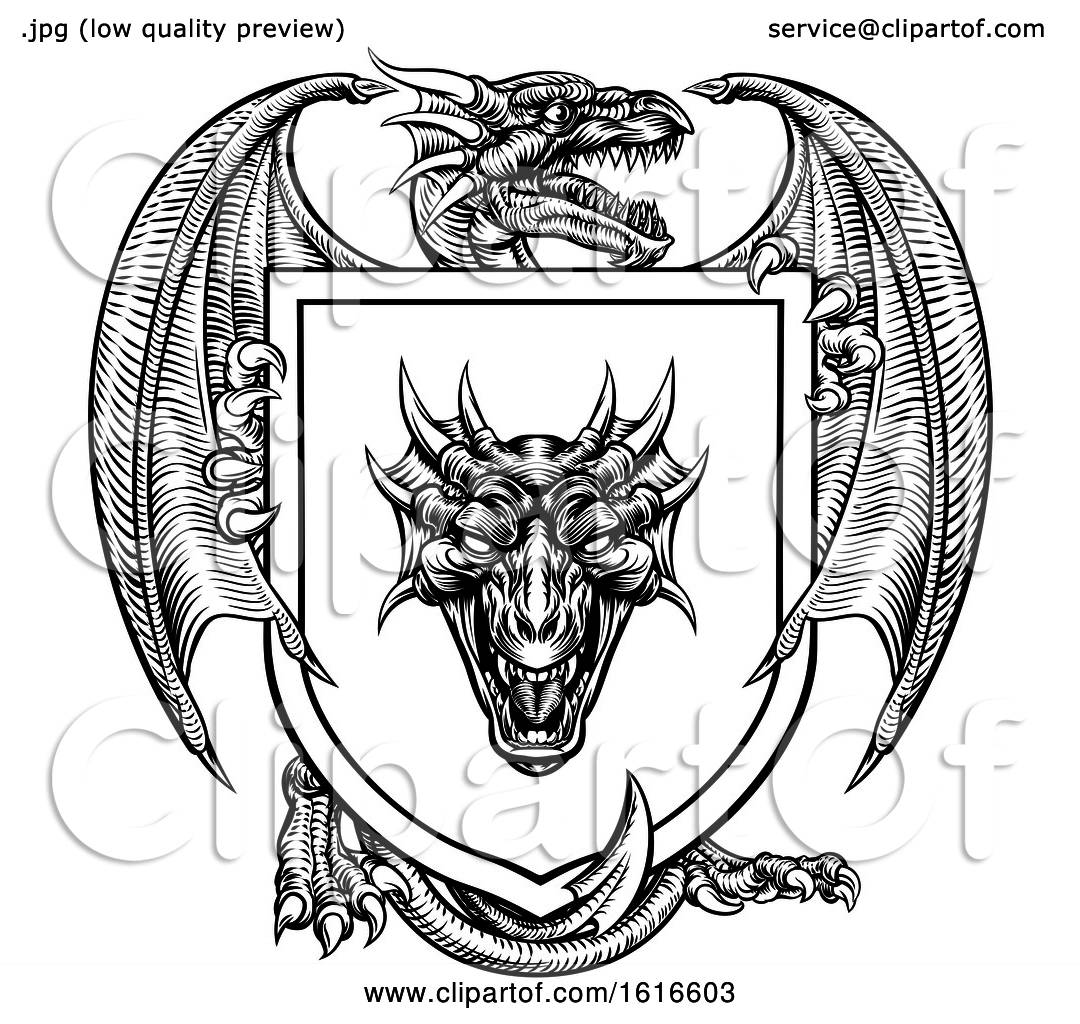
Green Dragon Head Fantasy Heraldic Shield Stock Illustration Illustration of green, head
Heraldry utilizes the symbolism of the dragon and many draconic types. General Terminology and Background Wyverns Hydras Drakes Amphipteres Basilisks and Cockatrices Western Dragons Other Closing Notes Footnotes General Terminology and Background There are some important terms used in heraldry that I will also use on this site.

Dragon Crest Coat of Arms Shield Heraldic Emblem Stock Vector Image & Art Alamy
A Complete Guide to HeraldryChapter 11. Chapter 12. →. CHAPTER XI. THE HERALDIC LION. H ERALDIC art without the lion would not amount to very much, for no figure plays such an important or such an extensive part in armory as the lion, in one or other of its various positions. These present-day positions are the results of modern.

Heraldic dragons hires stock photography and images Alamy
Bagwyn. A bagwyn is like the heraldic antelope, but having the tail of a horse, and antlers. Basilisk. A basilisk is like a cockatrice with a dragon's head at the end of its tail. Boreyne. A boreyne has the body of a dog, the horns of a ram, a spined fin on its back, a barbed tongue and a mane. Calgreyhound.

Heraldic dragon head Tattoos black and white emblem made of ink stains. 23293279 Vector Art at
Category:Dragon heads in heraldry From Wikimedia Commons, the free media repository Deutsch: Die Drache köpfe in der Heraldik. English: The dragon heads in heraldry. Français : Les têtes du Dragon en héraldique. Subcategories This category has only the following subcategory. C Coat of arms of Kyakhta Gradonachalstvo (3 F)

Winged heraldic dragon and heraldic shield Vector Image
Category:Dragons. Images of coats of arms showing a dragon of any kind. This includes European and Asian dragons, wyverns, lindworms etc. Dragons being killed by a saint are listed under the Saints : ( St. George, St. Michael or St. Margareth ). By clicking on the image, it will be enlarged.

Dragon Heraldry 14 Sketch from 2011 Herring, Heraldry, Douglas, Knight, Sketch, Dragon, Artist
There are only two instances of a Chinese dragon's head in SCA heraldry, both registered to Raymond de Caen. The first was his device, registered in May 1989, and the second was a badge from August 1997, with a note that the same head appears on his device. There is an earlier registration of a Japanese dragon's head to Ryugen Morite in the.

Summer Fun with… Heraldry Dragon, Red dragon, Clip art
Wyverns have been depicted in heraldry on shields, coats of arms and banners for hundreds of years, and are a symbol of strength and endurance. An amphiptere resembles a large snake with two feathered wings, but with a dragon's head. 2. They are the most serpent-like dragons; they have no legs. 3. Related to the wyvern. 4. Also known as.

Heraldic dragon head stock vector. Illustration of creature 90726200
The dragon in heraldry is symbolic of power, wisdom and astuteness. Dragon-Tygre Part dragon, part tygre: a cat like creature, though unstriped Dragon-Wolf Compound creature, part dragon, part wolf Enfield

Dragon heraldry set in classic coat arms style Vector Image
dragon's head Unidentified Stamp Dimensions: 70mm x 52mm Arms Two keys in pale Crest A dragon's head couped Initials A W Helmet of a knight Possibilities for Identification: Fairbairn's Crests gives several examples of a dragon's or wyvern's head crest, but none of them corresponds to the arms described in Burke's General armory.

Red Dragon Head Fantasy Heraldic Shield Stock Illustration Illustration of evil, dragon 192694000
T Tenné, a dragon passant or (2 F) Media in category "Dragons in heraldry" The following 85 files are in this category, out of 85 total. Wappen von Frasdorf.svg 512 × 559; 27 KB 16 Maricel de Terra, plafó de rajoles del pati (Sitges).JPG 4,416 × 3,312; 11.91 MB 44 of 'Reminiscences of Old Edinburgh' (11074999523).jpg 266 × 377; 31 KB

Black Dragon Head Heraldic Shield Vector Stock Vector Illustration of medieval, coat 140142200
Cuthred, King of Wessex, bore a dragon on his banner. A dragon was also the device of the British King Uther Pendragon, or Dragon's-head, father or that King Arthur of chivalric memory, who so bravely withstood the incursions of the Saxons. Two. p. 86. dragons addorsed—that is, back to back—are ascribed to Arthur, as well as several other.

Dragon Heraldry 23 Targaryen Heraldry, Heraldry design, Dragon
The leopard's face is by far the most usual form in which the leopard will be found in armory, and can be traced back to quite an early period in heraldry. The leopard's face shows no neck at all, the head being removed close behind the ears. It is then represented affronté.

Dragon Head Heraldry Shield Stock Vector (Royalty Free) 28878517 Shutterstock
In heraldry, the term attitude describes the position in which a figure (animal or human) is emblazoned as a charge, a supporter, or as a crest.The attitude of a heraldic figure always precedes any reference to the tincture of the figure and its parts. Some attitudes apply only to predatory beasts, exemplified by the beast most usual to heraldry - the heraldic lion; other terms apply to.

Dragon Heraldic Crest Coat of Arms Emblem Shield by AtStockIllustration 1616603
In European culture, dragon heads were seen as symbols of danger and evil. However, throughout history, dragon heads have also been used as a symbol of power and nobility, particularly in heraldry and coat of arms. In Norse mythology, dragons were revered as powerful and wise creatures.

Dragon Crest Coat of Arms inspired by a Medieval Tapestry Counted Cros Orenco Originals LLC
The Welsh Dragon ( Welsh: y Ddraig Goch, meaning 'the red dragon'; pronounced [ə ˈðraiɡ ˈɡoːχ]) is a heraldic symbol that represents Wales and appears on the national flag of Wales. Ancient leaders of the Celtic Britons that are personified as dragons include Maelgwn Gwynedd, Mynyddog Mwynfawr and Urien Rheged.

Heraldic dragon head simple Royalty Free Vector Image
In heraldry, cabossed, or caboched, is a term used where the head of a beast is cut off behind the ears, by a section parallel to the face; or by a perpendicular section: in contrast to couping, which is done by a horizontal line, and farther from the ears than cabossing. [1] [2]